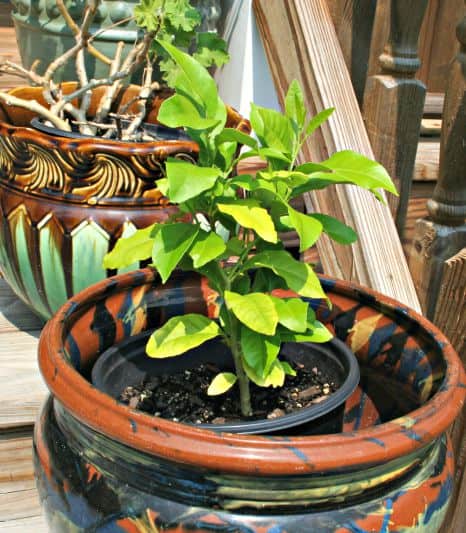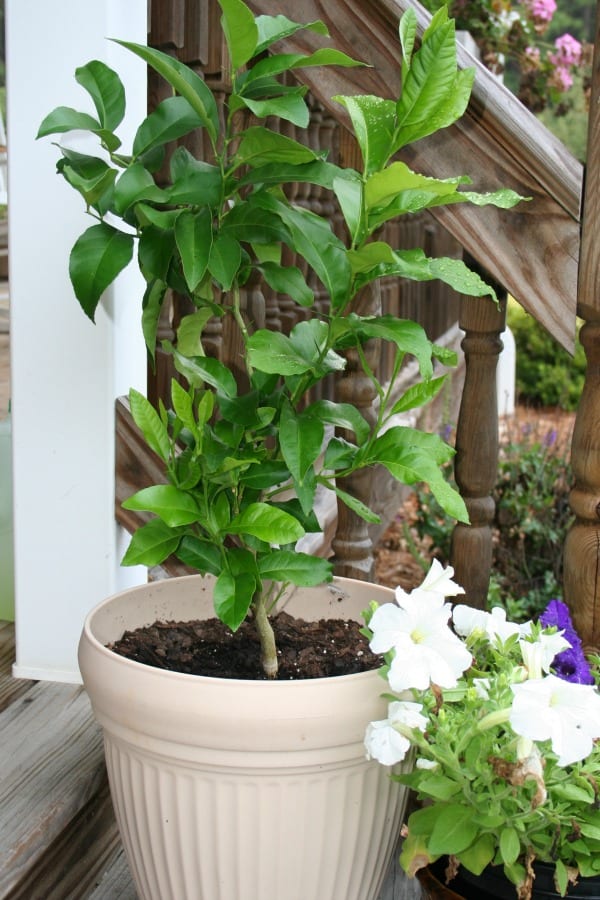If you’ve ever wondered can you grow a lemon tree from a seed, the answer is yes, you can. But it takes patience and time to coax the tree into producing fruit. In the meantime, you’ll have to tend a tree that wants to grow into six, seven or more feet tall.
Here’s the story of my lemon tree…which today, produced its first lemon.

The History of My Lemon Tree
Longtime readers of Home Garden Joy will recognize the lemon tree in these pictures. I grew it from a seed taken from a plain old lemon purchased at the local Walmart. I just wanted to see if I could grow it into a tree.




And grow it did! That tiny seedling has grown into a six-foot tall tree that we haul in and out of the house each fall and spring. Right now, it is by a sunny southern window in the house.
Our Lemon Tree’s Story
- Growing a Lemon Tree from Seed
- Growing a Lemon Tree from Seed, an Update
- The Lemon Tree – Growing from Seed
Notes on Growing a Lemon Tree from Seed Indoors
Here are my tips to grow your very own lemon tree from seed.
- Make sure you have a bright, sunny, warm southern-facing window for your seeds.
- Plant seeds from a lemon in a small pot with good potting soil. Keep it moist. I put a plastic bag over the container to make a mini greenhouse until the seed sprouted. Then, I removed the bag and just watered the seedling as usual.
- Once the tree grows, you’ll need to keep increasing its pot size to accommodate the roots. You will have to replant the tree in bigger pots. Make sure the pots have good drainage holes and you put a pan or dish underneath to catch the drips.
- We move our lemon tree outside in the summertime. We wait until the frost-free date is past and night temperatures are around 50-60. Then, we keep it on a sunny deck that gets all day sunshine. We water it daily during the summer.
- In the fall, we move the tree in its pot back into the house and keep it in a warm room that faces south.
- Lemon trees have thorns – so be careful when moving it. You will get scratched! They are big thorns!
- Lemon trees will shed their leaves in the winter. This is normal. Be prepared, it’s a bit messy.
- We’ve pruned our lemon tree to keep it shorter (so we can fit it through the doorways in the house when moving it inside and out) and also to shape it.
We never saw the blossoms on the lemon tree, but somehow, it managed not only to bloom but pollinate. Lemon trees are self pollinating, so the tree must have produced pollen and managed to shake it on the right place.
Our lemon isn’t ripe yet, but I look forward to tasting it once it turns yellow. In the meantime, I enjoy visiting our tree. It’s like a member of the family now.




